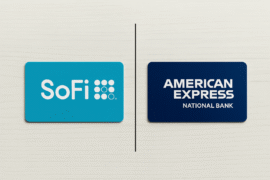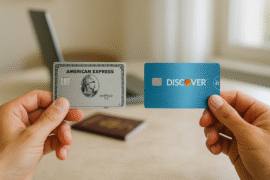This article may contain references to products or services from one or more of our advertisers or partners. We may receive compensation when you click on links to those products or services. Nonetheless, our opinions are our own.
The information presented in this article is accurate to the best of our knowledge at the time of publication. However, information is subject to change, and no guarantees are made about the continued accuracy or completeness of this content after its publication date.
- Buying Your First Car: A Complete Guide for First-Time Buyers
-
Understanding Your Budget and Financial Limits
- More about car affordability
- Choosing the Right Type of Vehicle for Your Needs
- Navigating the Car Buying Process with Confidence
- Getting Preapproved for a First-Time Auto Loan
- How to get an auto loan as a first-time car buyer
- Prioritizing Vehicle Reliability and Maintenance Costs
- Cost to Insure
- Finalizing Your Purchase and Preparing for Ownership
- Conclusion
- Recommended Reads
Buying Your First Car: A Complete Guide for First-Time Buyers
Buying your first car is a significant milestone. It can feel both exciting and overwhelming. While you may long for the freedom that comes with owning your own vehicle, selecting the right one can prove to be a daunting task. Whether you’re planning weekend road trips, need a reliable commuter for work, or want a family car for you and your family member to get everyone safely from point A to point B, there’s a lot to consider.
In this guide, you’ll find essential tips and practical advice tailored specifically for first-time car buyers. From understanding your budget and researching models to navigating dealerships and financing options, we’ll guide you through each step towards finding your ideal new car. By the end, you’ll have the knowledge and confidence to make a choice that’s right for you. Let’s get started on the road to your new adventure!
Understanding Your Budget and Financial Limits
As you begin your journey toward owning your first car, understanding your financial boundaries and financial goals is crucial. Start by assessing your current financial situation. Take a close look at your monthly income, expenses, and any debts you may have. Creating a simple budget will give you a clearer picture of what you can afford. Consider these tips:
- Set a Realistic Budget: Aim to spend no more than 15% of your monthly take-home pay on your car payment.
- Factor in Additional Costs: Include expenses like insurance, registration, maintenance, and fuel in your calculations.
- Build an Emergency Fund: Set aside funds for unexpected repairs or emergencies to avoid financial strain.
| Expense Category | Percentage of Monthly Income |
|---|---|
| Car Payment | 15% |
| Insurance | 10% |
| Fuel | 5% |
| Maintenance | 3% |
| Savings/Emergency Fund | 10% |
This approach not only protects you from overspending but also empowers you to make informed decisions. The goal is to drive away with a vehicle you can afford while maintaining your financial health.
More about car affordability
Understanding car affordability is pivotal in ensuring a smooth purchasing experience. The first step is to determine the purchase price of the vehicle you’re interested in, including the price of the car. This includes not just the sticker price but also the total amount you’ll need to pay over time, which encompasses taxes, registration fees, and other associated costs. As a general guideline, aim for a price range that aligns with your budget and considers the possibility of negotiation. By doing so, you’ll be better positioned to avoid financial strain and make informed decisions that align with your financial goals.
Consider these key aspects while assessing your affordability:
- Total Amount: When calculating your overall vehicle cost, include all fees and expenses to understand your true financial commitment.
- Price Range: Set a clear price range before you start shopping, ensuring it reflects what you can realistically afford without compromising your other financial obligations.
By setting a well-defined purchase price and total amount, you can confidently navigate the car-buying process and select a vehicle that fits within your financial landscape.
Choosing the Right Type of Vehicle for Your Needs
Your lifestyle and needs should play a key role in your decision. Are you commuting daily to work, embarking on weekend adventures, or planning for a growing family? Start by listing your priorities. Consider the following factors:
- Fuel Efficiency: If you plan on driving frequently, a car with good mileage can save you money in the long run.
- Size: Determine whether you need space for passengers or cargo. Sedans are great for singles or couples, while SUVs or minivans suit families.
- Budget: Assess not just the purchase price but also insurance, maintenance, and fuel costs.
- Features: Prioritize amenities like advanced safety features, technology integration, or all-wheel drive capabilities.
| Feature | Sedan | SUV |
|---|
| Fuel Efficiency | High | Moderate |
| Passenger Capacity | Up to 5 | Up to 7+ |
| Cargo Space | Limited | Spacious |
| Driving Experience | Smoother | Higher driving position |
Choosing the right vehicle is about finding a balance between your desires and practical needs. Take time to test drive a few models and weigh your options to see what fits best into your lifestyle.
The car-buying process can feel overwhelming, but preparation will make it much smoother. Here’s how to approach it with confidence:
- Research: Understand your budget and explore models that fit within it. Look into reviews, safety ratings, and average maintenance costs.
- Financing Options: Consider loans, leases, or paying in cash. Compare interest rates and terms to find the best deal.
- Test Drive: Always test drive multiple vehicles to compare handling, comfort, and features.
- Negotiate: Don’t hesitate to negotiate for a better price or extra perks. Start below your budget and work upwards if necessary.
| Term Length | Average Interest Rate | Monthly Payment (for $20k loan) |
|---|---|---|
| 36 months | 4.5% | $600 |
| 48 months | 5.0% | $460 |
| 60 months | 6.0% | $400 |
Getting Preapproved for a First-Time Auto Loan
When it comes to purchasing your first car, getting preapproved for an auto loan is a significant step that can streamline the buying process. Preapproval means that a lender has reviewed your credit report and financial information to determine how much money you may borrow and at what interest rate for loan approval. This knowledge not only helps you set a realistic budget but also enhances your negotiating power at the dealership.
- Understanding Preapproval: Preapproval involves a lender’s assessment of your creditworthiness. They will look at your credit report, income, and debt-to-income ratio to estimate the loan amount you can qualify for. This process typically results in a hard credit inquiry, which can slightly impact your credit score, but the benefits often outweigh this minor drawback.
- Reviewing Your Credit Report: It’s crucial to check your credit report before applying for preapproval. Ensure there are no errors in your credit report that could negatively affect your credit score. Addressing any discrepancies beforehand can improve your chances of receiving favorable loan terms.
- Shopping for Loan Approval: Once you have preapproval, use it to compare offers from different lenders. This approach allows you to secure the best interest rate and terms for your first auto loan, making it easier to shop for the right vehicle within your budget.
Overall, securing preapproval not only clarifies your financial standing but also empowers you to move confidently through the car-buying process.
How to get an auto loan as a first-time car buyer
Navigating the world of auto loans as a first-time car buyer can feel intimidating, but understanding the auto loan process can alleviate some of that stress. Here are three essential steps to help you secure an auto loan successfully:
- Research Your Options: Begin by researching various lenders to understand their requirements and loan offerings. Look into banks, credit unions, and online lenders, as each may provide different terms and interest rates. Comparing these options is crucial to making smarter financial decisions and finding the best fit for your needs.
- Evaluate Interest Rates: Once you’ve identified potential lenders, pay close attention to the interest rates and APR they offer. A lower interest rate can significantly reduce your overall loan costs. Keep in mind that first-time buyers might face higher rates due to limited credit history, but shopping around can help you find competitive rates.
- Prepare for a Hard Credit Inquiry: Be aware that applying for auto loans will result in a hard credit inquiry on your credit report, which can temporarily lower your credit score. However, if you apply for multiple loans within a short timeframe (typically 14 days), these inquiries are often treated as a single inquiry, minimizing their impact on your credit score. This strategy allows you to explore your options without severely affecting your creditworthiness.
By following these steps, you can effectively secure an auto loan that aligns with your financial situation and enables you to confidently purchase your first car.
Prioritizing Vehicle Reliability and Maintenance Costs
A reliable vehicle minimizes headaches and ensures a smooth ownership experience. Consider the following:
- Research Reliability: Look into the make and model’s reputation for dependability.
- Check Maintenance Records: For used cars, review the vehicle’s maintenance history to avoid unexpected issues.
- Warranty Coverage: A longer warranty can save costs and provide peace of mind.
Here’s an overview of average yearly maintenance costs for popular models:
| Car Model | Average Yearly Maintenance Cost |
|---|---|
| Toyota Camry | $400 |
| Honda Accord | $350 |
| Ford Fusion | $450 |
| Chevrolet Malibu | $532 |
Evaluating these factors upfront helps ensure your car is both reliable and cost-effective.
Cost to Insure
Insurance costs vary significantly based on several factors including the type of vehicle, your driving history, and your location. As a first-time car buyer, understanding the potential insurance costs is key to your overall budgeting. Consider the following aspects when evaluating insurance for your new car:
- Monthly Payment: Estimate your potential monthly insurance payment, which can range from $100 to $200 depending on the vehicle and your personal circumstances.
- Sales Tax: Don’t forget to account for sales tax when purchasing your vehicle, as this can affect your overall budget.
- Factors Influencing Rates: Consider how your age, driving history, and the type of car you choose can impact your insurance rates. Generally, safer cars with higher safety ratings may lead to lower premiums.
Here’s a quick reference for various factors influencing your insurance costs:
- Vehicle Type: New vs. used vehicles typically have differing insurance costs, with new cars often being more expensive to insure.
- Location: Urban areas may face higher insurance rates compared to rural settings due to increased risks of accidents or theft.
- Driving Record: A clean driving record can lead to lower premiums, while a history of accidents may increase your costs.
By understanding these factors, you can better prepare for the costs associated with insuring your first vehicle and create a comprehensive budget that encompasses all necessary expenses.
Finalizing Your Purchase and Preparing for Ownership
Once you’ve chosen the right car, finalize your purchase with these steps:
- Review Terms: Ensure the price, financing, and warranties align with your expectations.
- Gather Documents: Keep your registration, title, and insurance paperwork organized.
- Schedule Maintenance: Follow the manufacturer’s recommendations to keep your car in top condition.
| Expense | Estimated Monthly Cost |
|---|---|
| Insurance | $100–$200 |
| Fuel | $80–$150 |
| Maintenance & Repairs | $50–$100 |
| Registration & Taxes | $10–$30 |
Voted "Best Overall Budgeting App" by Forbes and WSJ
Monarch Money helps you budget, track spending, set goals, and plan your financial future—all in one app.
Get 50% OFF your first year with code MONARCHVIP
Conclusion
Buying your first car is a significant milestone that combines excitement with responsibility. With the right preparation, this process can lead to a fulfilling and financially sound purchase that suits your needs and lifestyle.
This guide has walked you through every critical aspect of buying your first car—from setting a budget and understanding financing to selecting the right vehicle and navigating the purchase process. By focusing on affordability, evaluating your financial limits, and researching your options, you can confidently make decisions that align with both your immediate and long-term goals.
Choosing the right type of vehicle requires balancing practicality with personal preferences. Understanding the total costs of ownership, including maintenance, insurance, and taxes, ensures you remain financially prepared even after the purchase. Moreover, securing preapproval for an auto loan and exploring financing options empower you to negotiate better deals and clarify your spending boundaries.
Finally, as you finalize your purchase and transition into ownership, staying organized with paperwork, regular maintenance, and insurance planning will ensure a smooth and enjoyable experience. With this knowledge in hand, you’re ready to confidently embark on the road to independence and adventure with your first car. Happy driving!

Reviewed and edited by Albert Fang.
See a typo or want to suggest an edit/revision to the content? Use the contact us form to provide feedback.
At FangWallet, we value editorial integrity and open collaboration in curating quality content for readers to enjoy. Much appreciated for the assist.
Did you like our article and find it insightful? We encourage sharing the article link with family and friends to benefit as well - better yet, sharing on social media. Thank you for the support! 🍉
Article Title: A First-Time Car Buyer’s Guide to Choosing the Perfect Ride
https://fangwallet.com/2025/02/07/a-first-time-car-buyers-guide-to-choosing-the-perfect-ride/The FangWallet Promise
FangWallet is an editorially independent resource - founded on breaking down challenging financial concepts for anyone to understand since 2014. While we adhere to editorial integrity, note that this post may contain references to products from our partners.
The FangWallet promise is always to have your best interest in mind and be transparent and honest about the financial picture.
Become an Insider

Subscribe to get a free daily budget planner printable to help get your money on track!
Make passive money the right way. No spam.
Editorial Disclaimer: The editorial content on this page is not provided by any of the companies mentioned. The opinions expressed here are the author's alone.
The content of this website is for informational purposes only and does not represent investment advice, or an offer or solicitation to buy or sell any security, investment, or product. Investors are encouraged to do their own due diligence, and, if necessary, consult professional advising before making any investment decisions. Investing involves a high degree of risk, and financial losses may occur including the potential loss of principal.
Source Citation References:
+ Inspo












































